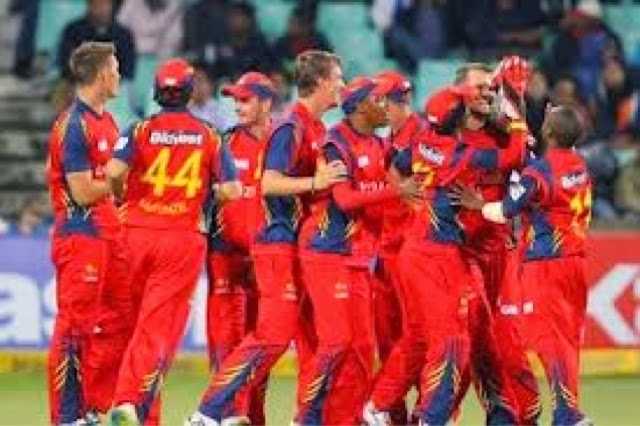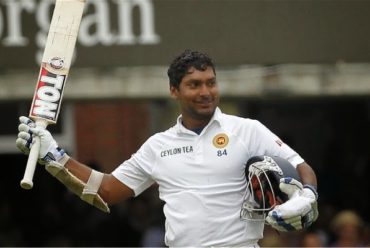With the amount of cricket played how does the team look to preventinjuries to fast bowlers?
Many people outside the cricket environment often ask, if there is much work from a physiotherapy point of view. Cricket unlike many other sports, has a high percentage of overuse injuries, that is, injuries that develop over time due to repetition and hence becomes chronic in nature. Stress fractures of the lower back to fast bowlers, rotator cuff shoulder injuries and tendonpathies (Achilles Tendon) are some of the chronic overuse injuries that occur in the sport. These type of injuries need to be managed and prevented to allow players optimal game time.
Fast bowlers are by far the most prone to injury as compared to the other disciplines in the game. This is purely due to the intensity they work at and their force expenditure at the crease. The key to preventing injuries to fast bowlers is as follows :
1. Performing a throrough musculoskeletal assessment
2. Understanding their bowling action
3. Monitoring their weight, Skinfolds, and general fitness
4. Monitoring bowling workloads
5. Having a keen eye on their recovery.
Musculoskeletal Assessments:
This is a specific physiotherapy assessment which is performed during our preseason. The assessment is an objective screening tool which analyzes the player from head to toe. At the conclusion of the assessment I will be able to distinguish areas of concern, which could potentially cause injuries in the future. Following this, each player will then be handed their own specific prehabilitation programme (preventative programme), in the hope to prevent injuries to these areas of concern. This programme will be maintained throughout the season
Bowling Actions:
Side on:
The side-on technique is typically characterised by a low run-up speed, rear-foot positioned parallel with the popping crease, and a shoulder alignment at rear-foot strike that points down the wicket towards the batter approximately 180 degrees (shoulder segment angle) (Bartlett et al., 1996). Thus, the fast bowler has the appearance of bowling ‘side-on’ as they begins the delivery stride, with the left hip and shoulder (for a right hand bowler) pointing towards the batter. A recent classification of bowling actions (Portus et al., 2004) describes the side-on action as “a shoulder segment angle less than 210 degrees at back foot contact, a hip-shoulder separation angle less than 30 degrees at back foot contact, and, shoulder counter-rotation less than 30 degrees (Portus et al., 2004). A key feature of a side-on delivery is that the lumbar spine is subject to less rotation when compared with other actions. The side-on action while being the most ‘traditional’ action is now considered to be extremely rare in modern day fast bowlers (Ferdinands et al., 2010; Ranson et al., 2008).
Semi:
This sub-classification is relatively new and was advocated as a safe technique by the Australian Cricket Board as recently as 1998 (Portus et al., 2004). In this action the shoulder segment angle lies between the front-on and side-on actions. Similar to both the side-on and front-on actions, there is little to no counter-rotation of the shoulders. It is described as “a shoulder segment angle from 210 to 240 degrees at back foot contact,
a hip-shoulder separation angle less than 30 degrees at back foot contact, and, shoulder counter-rotation less than 30 degrees "( Portus et al., 2004).
Front on:
The front-on action, made famous by the West Indian pace bowlers throughout the 1970s and 1980s (Hardcastle, 1991), has been adopted widely in the modern game (Ferdinands et al., 2009). In a front-on action, the bowler’s hips and shoulders are open prior to delivery, giving the appearance of the
bowler running straight towards the batter. This action is described as “having a shoulder segment angle greater than 240 degrees at back foot
contact, a hip-shoulder separation angle less than 30 degrees. at back foot
contact, and, shoulder counter-rotation less than 30degrees ” (Portus et al., 2004). As with the side-on action, the degree of rotation of the lumbar spine is less than in other actions.
Mixed action:
The mixed action is a combination of both the front-on and side-on bowling actions, therefore the exact technique can vary. For instance,when the back foot makes contact, the hips and lower limb can adopt an orientation consistent with a side-on action whereas the shoulders face front-on to the batter, but the opposite of this can also occur. The mixed action is defined
as any action with “a hip-shoulder separation angle equal to or greater than 30 degrees at back foot contact, or, shoulder counter-rotation
equal to or greater than 30 degrees ” (Portus et al., 2004). Recent studies
(Ferdinands et al., 2010; Ranson et al., 2008) employing more specific classification methods, have identified that this action is the most prominent in professional adult bowlers from England, Australia and New Zealand (Ferdinands et al., 2010; Portus et al.,2004; Ranson et al., 2008).
Contributors to injury:
Weight:
A body's relative mass or the quantity of matter contained by it, giving rise to a downward force; the heaviness of a person or thing.
Skinfolds:
Many athletes attempt to alter their body weight composition, either by trying to put on weight ( in the form of muscle) or by losing weight ( in the form of fat). Certain sports require athletes to have large amounts of muscle mass. Some sports require athletes to be a particular weight to compete. There accurate assessments of body composition is necessary in certain athletes.
Sum of 7 skinfolds:
The body fat measurements of 7 areas of the body are measured using calipers:
- Tricpes
- Subscapular
- Biceps
- Supraspinale
- Abdomen
- Anterior thigh - quadriceps
- Medial Calf
Ground reaction forces (GRFs):
In physics, and in particular in biomechanics, the ground reaction force (GRF) is the force exerted by the ground on a body in contact with it. For example, a person standing motionless on the ground exerts a contact force on it (equal to the person's weight) and at the same time an equal and opposite ground reaction force is exerted by the ground on the person. GRFs, occurs when a fast bowler pounds his front foot into the ground, up to 9times his body weight. Imagine the force that goes through his front ankle, knee, hip and lower back.
Bowling Workloads:
Managing the amount of overs a fast bowler delivers is also extremely important. Off particular importance is looking out for "spikes" in a fast bowlers week or month. By "spikes", I mean, if a bowler bowls 30 overs in weeks 1 and 2 and suddenly bowls 60 overs in week 3. Week 3 is seen as "spike" in his trend and is seen as a "red flag" (something to watch out for). The increase workload could result in injury. We would then look to lower his loads or rest him for a few days.
Weight, Skinfolds , GRFs, a poor bowling action, and high workloads do the math.......
Recovery:
Recovery is a major component of preventing the risk of injury in fast bowlers. With the amount of cricket played these days, these athletes need to be managed well, to perform optimally for the next day or the next match. This is the menu I request guys to follow:
1. Hydration levels need to be monitored. This is done using a refractometer, which
can analyze if a player is hydrated or dehydrated. Players need to urinate in this
machine, during the course of a day. The results, allows me to see if they are
drinking enough fluids.
2. Regular stretching - during a first class game, fast bowlers are requested to join
me in an early morning yoga session. This allows players to focus on stretching,
using yoga positions.
3. Nutrition is an important aspect of recovery, as refueling the body after a
long day is required to replenish nutrients lost.
4. Ice baths or pool sessions are done after a days play
5. Post match static stretching and form rolling must be done after a days play.
6. Massages are also available
Remember, fast bowling is not a easy job and to get to the top and remain there, managing our body is vital to your success. Look after the little things and the bigger picture will draw itself.






